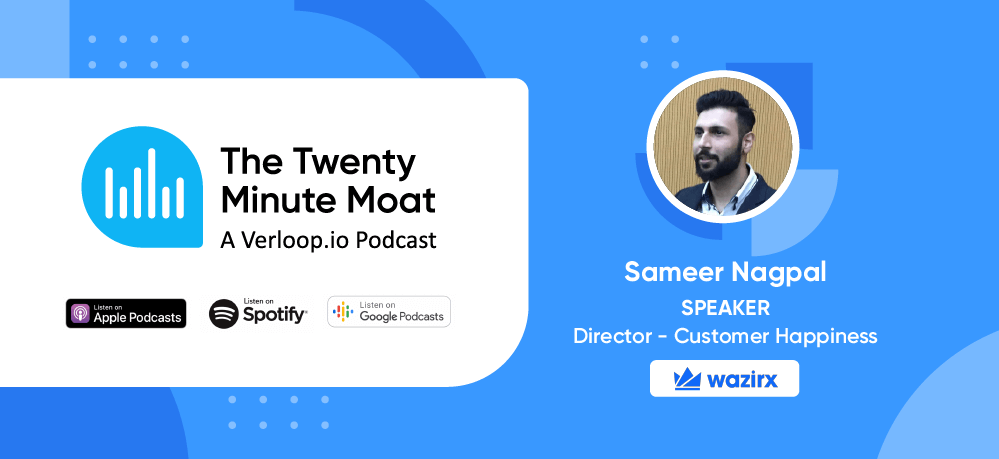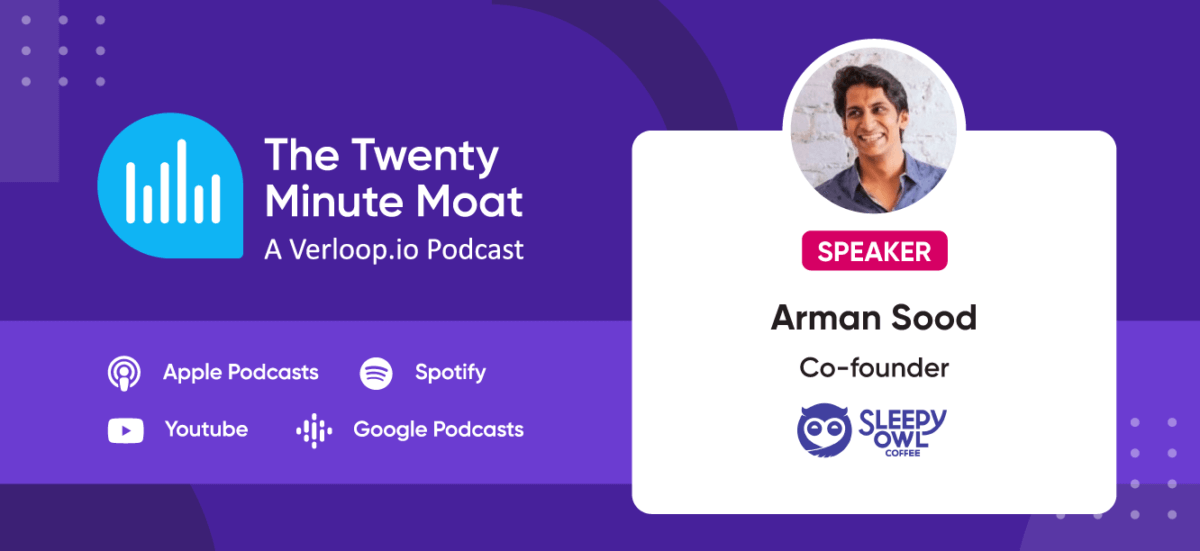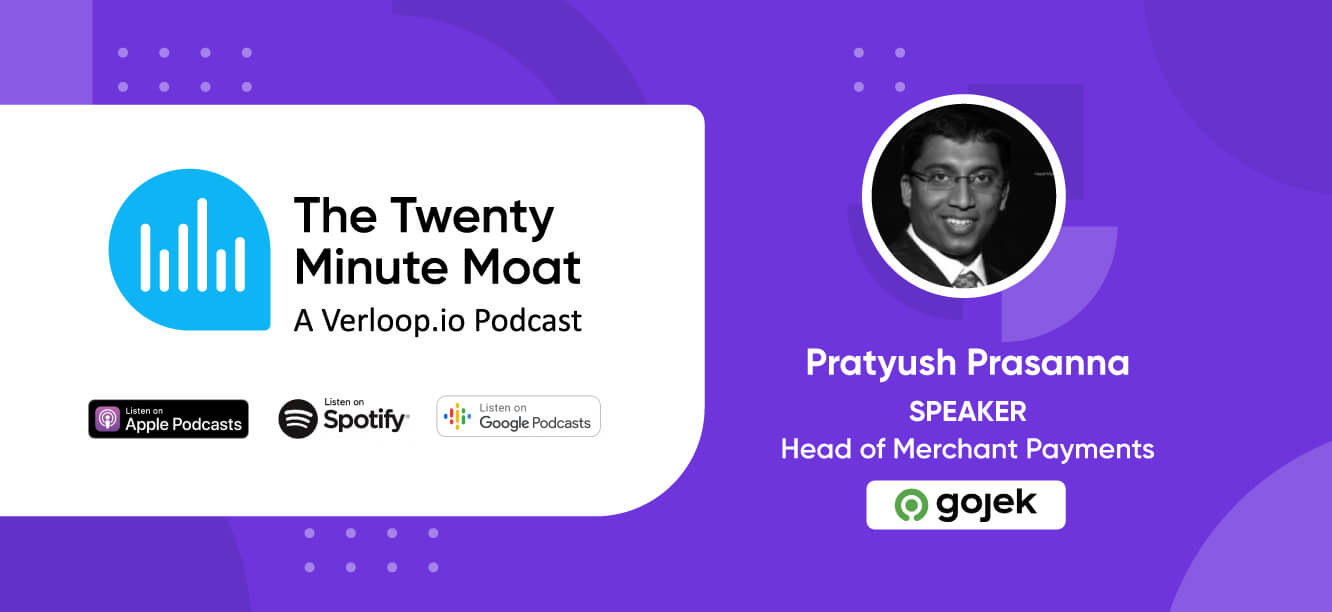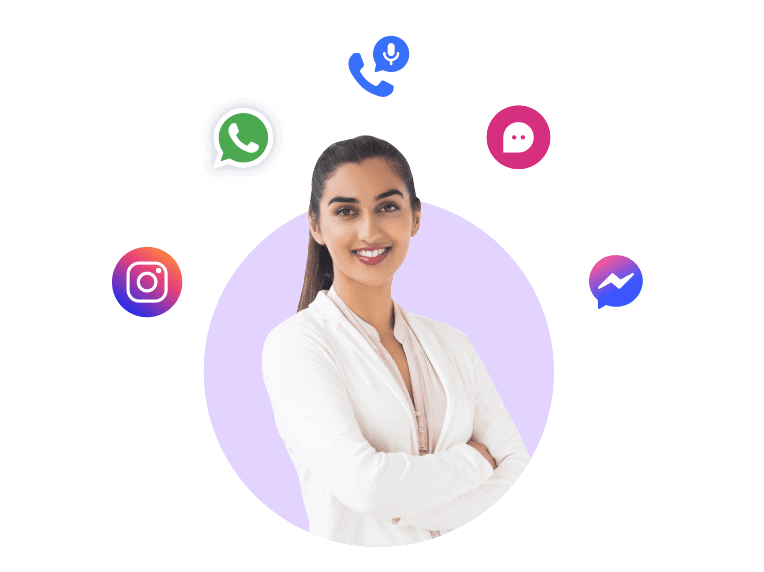Duration 24:11
Guest Speaker

Nikhil Shanker
VP, Customer Experience at Urban Company
Industry
E-commerce
Nikhil Shanker is the VP of customer experience and partner experience at Urban Company, a services platform. Nikhil’s role focuses on building processes and systems that assist customers as well as service partners who deliver the services to the customers. With 9+ years of experience, Nikhil has previously worked with HCL Technologies and Infosys.
We cover:
- Evolution of support at Urban Company during the pandemic
- Managing customer expectations when demand spikes
- One process implementation that enabled delightful CX
- Future of customer support and customer experience
Podcast Transcript
In this customer expectations management podcast, we have Nikhil Shanker as our podcast guest and Jude Gerald Lopez as our podcast host.
{00:00:29} Jude Gerald Lopez
Welcome everyone to another episode of the 20 Minute Moat Podcast. I’ve got a very interesting guest on the show today. We’ve got Nikhil Shanker, who is the VP of customer experience at Urban Company.
I think Urban Company doesn’t really require any introduction. I think everyone is quite familiar with the services in the last few years particularly.
So, without further ado, I’ll ask Nikhil to give us a little bit of a intro on his role at Urban Company and what the journey has been like. Welcome to the show Nikhil.
Nikhil Shanker
Thank you so much Jude. Thank you so much for having me here.
Yeah, I’ll, I’ll give you a quick introduction about what I do at Urban Company and also, just for the benefit of listeners, I will give some context on Urban Company.
So we are a services platform. As a consumer, you can come on to Urban Company and book services such as personal grooming services for both men and women. Whether you need a salon at home or a haircut at home or a massage at home, all of that is available on Urban Company.
Similarly, if you need a plumber or a carpenter or AC repair or your fridge has gone bad and you need that to get repaired, you need your house painted, all of those are services available on Urban.
The key thing being that at, at one end, we have consumers, at the other end our service professionals who are carefully selected and trained by Urban Company and then through their journey on the platform, they are consistently monitored for quality.
And anyone, you know, based on any variance, we intervene and we retrieve professionals who always maintain a very high quality of, of service delivery on the platform.
The one key difference with that any service professional experiences is that out of the entire money that they earn from their services, they give a, a component which is in the range of 18 to 25% to the platform as, as platform function fees/commissions, etc which all go towards training and marketing and so on.
And, and they take home with them roughly 2/3 to 80% of their earnings, net of everything, so which is very different from when they would be functioning, say, in a, you know, physical salon where, when they deliver ₹100 or services, they’re essentially taking back possibly ₹20.
On Urban Company, that equation flips. So that makes all of these professionals also highly engaged, highly motivated micro-entrepreneurs who are looking to always deliver high-quality services. And it’s this model which has helped us scale quickly while delivering by way high-quality services to consumers and fantastic earnings to service partners who operate off the platform.
My role at Urban Company is to, is to ensure that any customer in the process of taking services from Urban Company, they require any support in their journey.
There is a team and a system that’s there to assist customers, and likewise for service partners who deliver these services via the Urban Company platform, if they have any challenges, if they need any support through their journey on Urban Company. There is a system and there’s a team that’s available to give them the necessary support.
So I lead customer experience and service partners experience at Urban Company.
00:04:05 Jude Gerald Lopez asks about evolution of Urban Company
Thanks, Nikhil. You know, I also wanted to sort of deep dive into the whole customer support in customer experience function at Urban Company.
So, how has that evolved in the last two years, given that, you know, you had the pandemic in 2020 and, say, these professionals, who work with Urban Company were sort of at the front line going to customers’ homes and all of that?
So with that, you know, difficulties, how is the support as a function evolved at Urban Company and how has your team grown and over these two years?
Nikhil Shanker emphasises on the journey
Yeah so, I think, over the last two years, we’ve obviously gone through the pandemic and, you know, when I reflect back on us as a company and us a team, we’ve always been very, very focused on our customers and our service partners.
To the extent that there are one of our key values internally is win-win, which is that how do we create systems and how do we operate with a philosophy where both our consumers and our service partners win with any decision we take.
And in that light when, when the pandemic set in, we double dived on systems that will ensure safety and, and, and quality for our consumers.
So, very quickly systems came up to ensure that our service partners were masked, they wore gloves, and various forms of PPE’s.
And we invested heavily in shipping all sorts of PPE equipment to our service partners.
In parallel as a support team, we were very very cognizant of the needs of our consumers and our service partners.
We assisted partners deeply in their process of serving customers, you know. For very simple decision could mean that, hey completely stop operations because of COVID and so on, but there’s it’s equally important to recognize that individuals earned through the, who have earned over the last couple of years and, and, and continued their livelihoods, and, that was an early realization for us that we had to play a key role in enabling our service partners to serve.
And the support team played a key role over there, consistently getting in touch with service partners, ensuring that they were well supported.
Through that period we also launched various initiatives, like a suraksha program for partners, which assisted them through any infection and illnesses with financial support.
There were soft COVID loans given during that period because some partners, owing to municipal restrictions, could not operate.
So, so there is a support team which assisted partners in understanding that loan, taking that loan, making use of it.
Equally, on the consumer side, there were apprehensions, etc. They would call in, there was a team that was assisting them in that process.
So, I think, over the last two years, we’ve seen a lot of that journey. Fortunately, now we’re at a place where all our partners are vaccinated, most of India and most of our consumers are vaccinated.
So any spread of COVID is largely, at least now what we’re seeing is, is mild.
While we continue to be very vigilant, we are, we’ve all been through a period where we’ve seen a tough phase, and now, you know, with, with enough vaccination, enough precautions, enough awareness, I think the whole environment is much more safe for all of us.
One, you know, specifically on the team, while we’ve always been in, been very focused on ensuring that each and every problem that our customers and partners face is, is solved for them.
We’ve also realized that to ensure great experience for our customers and our partners, while we solve for the instance and, and that’s been our focus for, you know, since, since the support function at Urban Company was set up, over the last two years, a lot of our focus has shifted to eliminating core problems.
So, the team has started going back and thinking that ok, this particular instance is going solved, getting solved, but how do we create the right systems to ensure that this problem (A) gets eliminated at the core?
And if it can’t get eliminated, then there are system which create a self serve solution for the user, whether it’s a customer or the partner.
And hence, to drive this, to drive core problem solving and to drive more automation, the team has become more heavy at, or you know, from the lines of, of more problem solvers joining the team.
It’s not a, it’s not a typical customer support team where you have people managers and people are just solving problems. You have a lot of team members now who are just focused on core problem elimination.
And you have a very closely knit product and technology team that is working on a lot of automation solutions, who make sure that if the problem can’t get eliminated at the core, then there are smart systems to give consumers and partners a solution on the app itself rather than having to speak to a service partner or to an associate.
So in, in essence, the that the team has, it brought in a lot of team members who can solve problems.
Equally, we, we have also realized that to ensure that these, these team members were able to focus on solving problems, we have also, for a lot of, of the issue resolutions which were repetitive, we have, we brought in an outsourced partner and moved a lot of our team member account to working with a partner organization.
And our team closely works with, with that partner. But, the earlier bandwidth that went into people management, that has reduced.
So that the team can now focus on actual core problems getting solved. And then it creates the right systems, incentives, programs, etc to enable all associates with our, whether they’re in-house or with our partner company who succeed at solving customers problems.
00:10:54 Jude Gerald Lopez
Alright. You know I, I think you’ve picked out some interesting points, you know, one is on self service options.
And I think having good self serve options also creates a very seamless experience for customers.
I’ve, I’ve got a, I, I wanted to know a little bit more of, you know, the kind of customer base.
So, I’m guessing a lot of millennials and Gen Z users are comfortable using services app like Urban Company.
Now, when there is a spike in, you know, demand, and, you know, it’s a popular app, and a lot of people require these services, particularly in, you know, tier one cities in India.
How do you manage customer expectations, you know, especially when there is such a spike in demand?
So has that been a kind of a challenge that you had to sort of handle when it comes to customer experience?
Nikhil Shanker talks about customers expectations
Yeah. We, we actually go through a bunch of of peaks, you know, with the, for example, with the onset of summer, a lot of consumers tend to book a lot of home services and personal services.
Examples being a lot of consumers will require services for their air conditioners and refrigeration.
With the onset of summer, this time, a lot of people started getting back to work.
So people required male grooming services and female grooming services, a lot of salon services for men and women were in demand.
There are, around festivals or, or house movements, again with the onset of summer, there was a demand for electrician services, cleaning services.
So all that got bundled up and through March and April there’s a huge spike.
You obviously, there’s, there’s some level of awareness that will happen, and so we tend to model that in, build our team accordingly, and so on.
But, we know that it’s not a sustainable answer that every time you peak, you’re gonna have to build your team.
So a lot of focus at our end goes towards, to be ready, how can we ensure that core problems themselves don’t occur?
So there’s a lot of prep towards core problem solving so that the friction doesn’t occur for the customer or the partner.
Given that we’ve captured a lot of it previously, we go in and try to solve core problem first.
Second, that we recognise that if the problem were to occur, how do we make it a seamless experience for the user.
So good example is that any AC service that you take off our company comes with a 60 day warranty.
Now, if you take a service and say, four days later, you witness that someone fix my AC, but I see some water dripping from the side of the air conditioner.
The normal approach would be to call the company and then they would say OK, let us get back to you, will arrange something, and so on and so forth.
What we’ve done is that we’ve created a, a, a flow in the app where if you face problem, say, 60 day warranty valid, go on the app, it says book a free revisit, you simply click a button, find your slot that is suitable for you, click it, book it and the same professional who served you will come back free of charge and fix the problem.
That would a, and that’s a good example of making an experience seamless for the consumer.
And there’s a ton of thing that’s happened in the back end. There is obviously a technology there.
There is ensuring that the service partner and their incentives are aligned to making sure that they do this, revisit.
There is a P&L play to make sure that this, this entire cost that service partner incurs to go back and revisit, or the company incurs in some cases, you know, still ensures that the business is sustainable.
So all of that is happening in the backend, but in the front end the customer has a very, very seamless system who operate with.
And that, that’s the second layer we focus on, which is that how do we create very seamless flows for consumers which are easy to use.
And we found that, you know, like you mentioned, that there are a lot of young millennial users who come and use Urban Company.
But equally, across age groups, we find that systems that are simple and intuitive, irrespective of age group, irrespective of background, people will tend to gravitate towards them and use them because they’re just so simple.
And this is one good example of a seamless service that, that is there on Urban Company and very different from how you would avail of any form of warranty from any other alternate.
00:15:41 Jude Gerald Lopez
Yeah, interesting. I mean, I remember even, you know, when you book an appointment and you want to have the same person come back and fix it for you, it is a, it is a very easy affair on the app to just select that option and have the same, say technician or an electrician, just come and, you know, fix it, because it makes it a lot simpler.
That’s how you would do it if you knew the person, you know, not via an app. So I think that’s a very brilliant thing in that.
I remember doing this once and I was thinking, oh, this is I mean, this makes so much sense. It, it, it would have been awful it was if it wasn’t there, right?
Nikhil Shanker
Yeah, absolutely. And again, like, great example. Very specifically relevant for our personal care services.
When a, when a female customer at an Urban Company, she takes a salon service and, and she likes the professional.
She typically wants the same professional to come home a month and a half later because now the professional understands what the customer likes.
It’s very, very, you know it’s, it’s in your house. There’s, there’s some service happening on your skin and so on, so you have specific needs.
And when you identify your professional who understands that, is empathetic towards your requirement, so you typically want the person to come back and deliver again.
And that was, I think, a, a starting point where we, where we realised that ok, while as a platform, we want to ensure that every single professional is high quality, there is an element of customer preference for a specific professional.
And, and therefore we enabled a flow on the system to in, you know, for consumers to bring back the same professional they booked earlier.
At the back end, it creates a lot of complexity in the system, you know, it touches our capacity system, it touches our matchmaking systems between demand and professionals.
How we incentivize professionals in the right way? How we use this in our subscription systems, so on so forth.
So multiple things happen in the back end, but that’s the beauty of any good system that on the front end we’re going to create a very simple seamless system. All of the complexities is there at the backend.
00:18:01 Jude Gerald Lopez
Yeah, I think that’s a very, very customer centric movement. I think, I mean, I remember it, I’m sure, like there are tens of thousands of people who remember this specific feature and think, hey, that, that makes so much sense, makes, and it’s so much more personal that way.
Like you know why, I mean it, it’s an example of how the digital and the non digital system works so seamlessly that, you know, you don’t think of it as a chore to, you know, get this done or, you know, you need to go through certain steps.
It’s, it’s quicker, it’s quicker, it makes more sense and like you said, it’s intuitive. I had one more question, you know?
This is again from your personal experience at Urban Company.
Is there one, you know, very interesting or magical thing that you’ve been able to like, adopt and carry forward in customer support at Urban Company?
I’m sure there are lots, but what is that one thing that you think is quite an interesting take on either customer experience or a kind of, any kind of implementation in terms of processes that has made, you know, delightful experiences so common when using Urban Company?
Nikhil Shanker
Yeah, great question. So, you know there are lot of, like you mentioned, there are lot of things, and, and there are lot of things top of the mind, like some of that examples of technology idea that this investing in, technology is a great, great tool to create leverage in the system right?
Like now, for example, you spoke about peaks and troughs, in, in how demand comes in and, and how self-serve flows can take care of also lot of those peaks.
There are, there are chat systems and chatbot systems. There are, there is a bunch of technology, but like, so all of those are things, but, I mean, the one key thing to me, very close to my heart is, something very, very basic and that’s, there are a lot of people within the company, including almost every senior member of the leadership team, focuses very deeply on being close to customers and service partners.
So we have team members going on the ground and spending time with service partners to understand what works and what does not work.
And this includes one-on-one conversations, group discussions. Actually physically going meeting service partners, physically going, sitting on their bike, traveling with service partners.
So, those are experiences which make problems very real and, and those problems then come back to the drawing board and the teams work to solve them.
And similarly on the consumer side, our team members go and visit customers, try to, just in-person understand problem areas.
What is working for the consumer, what are some challenges they are facing?
Equally, take services ourselves quite a lot and therefore, you know, communication channels that use, we use slack as our communication platform.
So you, you’ll see every day, a bunch of problems being shared, that hey, this service, this is exactly, these are the three things that broke.
How do we go about fixing those? So on and so forth.
So it is a, you know, overall it, it keeps us all real and grounded and to the point where we’ve not even had to institutionalize any program like a partner day or a customer day.
I think it has just now become part of the culture where people do it themselves.
And, it couples well with the sort of team members there are in Urban Company where everyone is very introspective and reflective and no one is, is insecure in the fact that if, if something negative get shared and that’s a reflection on me.
So, the people, you will have the person leading say, an appliance service talk about, say on Saturday, I took a microwave service and these are the four things that broke in the service. Let’s go out and fix these.
So people are intuitively very, very, just, just, in general, focused on building the right platform for customers and service partners. And that ensures that we are always improving.
A lot of that also comes from the customer experience and the partner experience function where there is, there’s a more structured approach towards the same thing that hey, these are the things we are hearing back from customers.
Let’s look at how we can solve a problem one, which is 20% of the problem, problem 2, which is 10% of problem.
The team works with different parts of the company to drive that and so on, but overall, I think, the one key thing is this approach of being on ground and very close to partners and to customers and that culture has helped us consistently build a company that’s focused on customer experience and partner experience.
00:23:35 Jude Gerald Lopez
Brilliant. I think, you know, from what customer support should be based on, this conversation has been extremely insightful.
Like you know, those fundamental philosophies of how to approach customer experience and then how to build on that, build processes on that and then ultimately, you know, delivered to customers.
So I think it’s been, it’s been really insightful talking to you, Nikhil. Thank you so much for taking the time out and, you know, being on the podcast as well.
Nikhil Shanker
Thank you so much Jude, and it is a pleasure taking to you.



